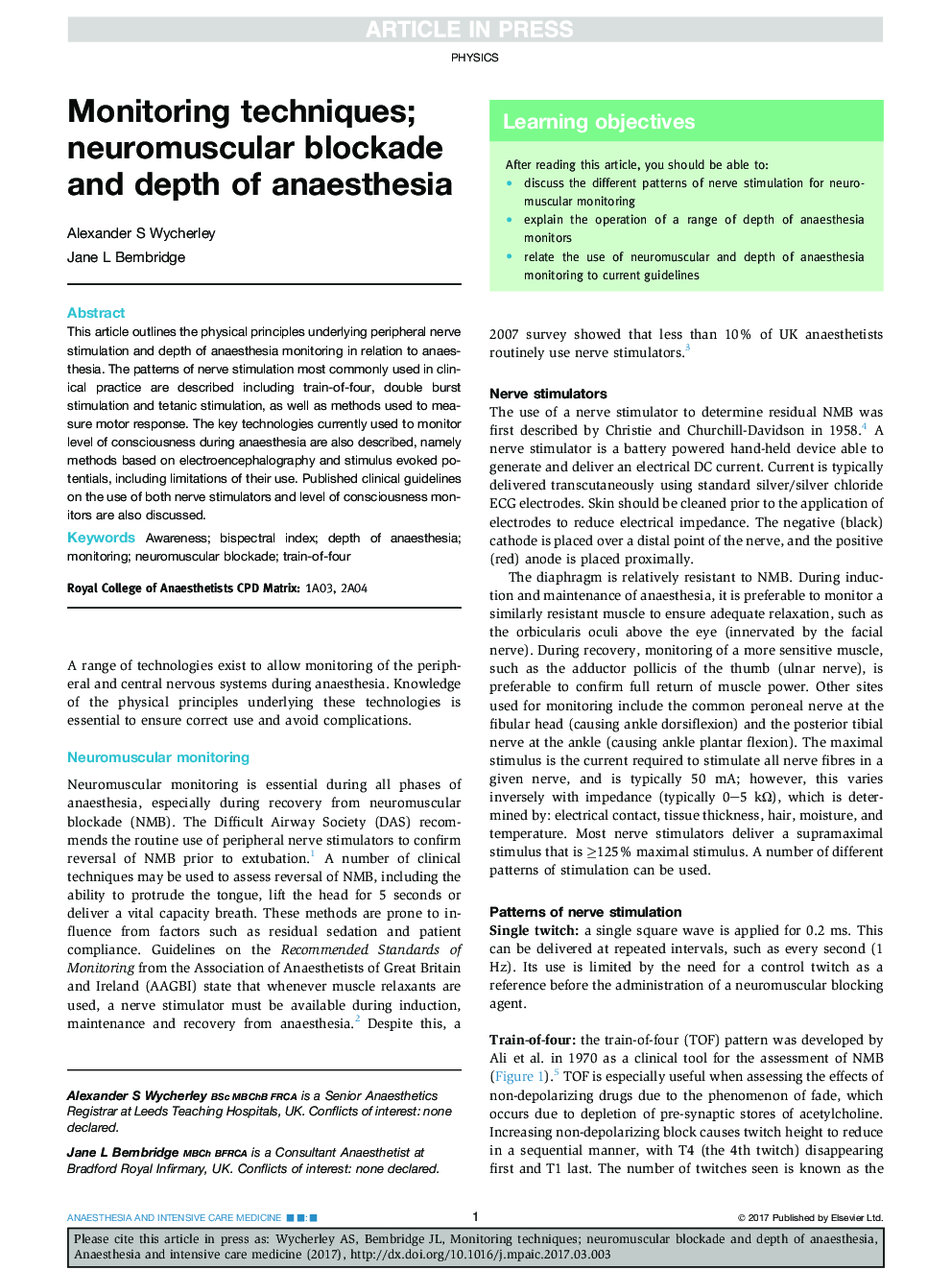| Article ID | Journal | Published Year | Pages | File Type |
|---|---|---|---|---|
| 5580231 | Anaesthesia & Intensive Care Medicine | 2017 | 4 Pages |
Abstract
This article outlines the physical principles underlying peripheral nerve stimulation and depth of anaesthesia monitoring in relation to anaesthesia. The patterns of nerve stimulation most commonly used in clinical practice are described including train-of-four, double burst stimulation and tetanic stimulation, as well as methods used to measure motor response. The key technologies currently used to monitor level of consciousness during anaesthesia are also described, namely methods based on electroencephalography and stimulus evoked potentials, including limitations of their use. Published clinical guidelines on the use of both nerve stimulators and level of consciousness monitors are also discussed.
Related Topics
Health Sciences
Medicine and Dentistry
Anesthesiology and Pain Medicine
Authors
Alexander S. Wycherley, Jane L. Bembridge,
